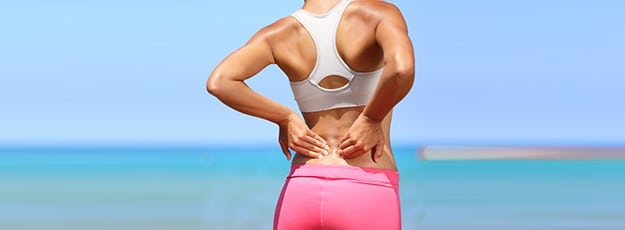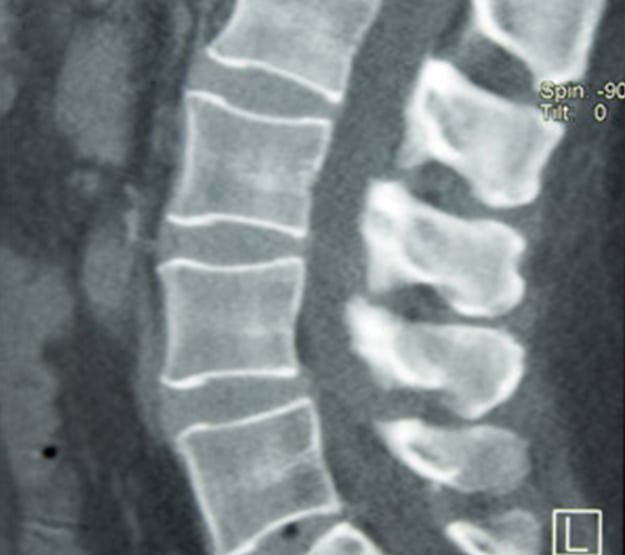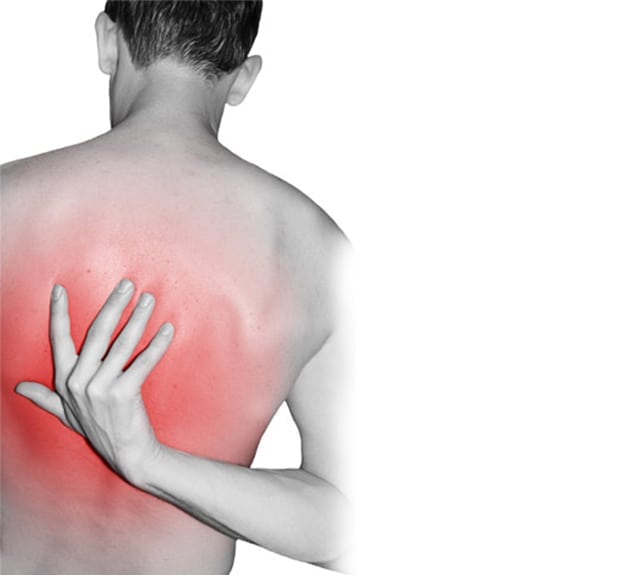
Spinal pain is often extremely uncomfortable.
There are many parts to your back—discs, muscles, nerves, and bone. Because of this, there are many orthopedic conditions that relate to the back.
- Back pain can range from mild to debilitating
- Our center can help you restore your range of motion
CONTACT US TODAY
- Herniated disc – There is a gel-like substance inside the discs in your back. This substance can push through the outer layer and apply pressure to nearby nerves. This is referred to as herniation, and it occurs with simple aging and wear and tear on your discs. A herniated disc can also develop after strenuous activity or heavy lifting. Treatments include heat and ice therapy, rest, epidural injections, and the surgical removal of the affected disc.
- Spinal stenosis – Spinal stenosis is the narrowing of the spinal canal over time, another condition that can develop with normal wear and tear on the back. Symptoms include weakness in the legs and pain in the legs and back. Treatments include lumbar traction therapy, steroid injections, chiropractic care, physical therapy, spinal fusion, and surgical decompression.
- Degenerative disc disease – This is another type of back condition that can simply develop with time. With aging, the discs lose fluid and can begin to show tiny cracks, which can contribute to conditions like herniated discs and osteoarthritis. Treatments for degenerative disc disease include medications, physical therapy, injections, and surgery to replace the discs.
- Sciatica – This condition is typically caused by a herniated disc or bone spur that is compressing the sciatic nerve, causing pain to radiate from the lower spine and own one leg. Some numbness and inflammation can also be present. Treatments for sciatica include medications, physical therapy, injections, and surgery to remove the disc or bone spur that is pressuring on the nerve.
- Spondylolisthesis – When one vertebra slides forward over the one beneath it, the result is spondylolisthesis. This can be caused by stress fractures, infections, arthritis, and defective joints. Some patients experience no symptoms, while others experience numbness, weakness, and pain in the buttocks or lower back. Treatments include physical therapy, medications, and surgery to remove the tissue or bone placing pressure on the spinal cord or nerves.


- Compression fracture – A break in the bone located in the spine is also known as a compression fracture. Osteoporosis and spine trauma can result in this type of injury, and symptoms include leg weakness, severe pain, and loss of bladder control. Treatments for compression fractures can encompass bracing, rest, pain medications, and surgery to fix the vertebra in place.
- Spinal arthritis – Also known as osteoarthritis, spinal arthritis is the breakdown of cartilage located in the discs and joints in the back. This condition is caused by aging and general wear and tear, although injuries can contribute to its progression. Spinal arthritis can result in pain and stiffness in the back and neck, in addition to numbness and tingling in the legs and arms. Treatments include weight loss, strengthening exercises, massage, and electrical nerve stimulation.
- Spinal arthritis – This is also referred to as osteoarthritis, and is the breakdown of cartilage in the back caused by aging and sometimes injuries. Symptoms of spinal arthritis include numbness and tingling in the arms and legs and stiffness and pain in the back and neck. Non-surgical treatments like massage, weight loss, electrical nerve stimulation, and strengthening exercises can provide relief.
- Scoliosis – Characterized by a curve in the spine, scoliosis can be present at birth and also develop later in life as a result of injury or abnormal muscles and nerves. Sometimes, the cause is unknown. Scoliosis is often monitored closely to ensure that the curve is not getting worse. Braces may be used to halt the curve’s progression. For severe cases of scoliosis, surgery might be performed to correct the curve and hold the spine in place.
In some cases, back pain is the result of general overuse or sports injuries. A consultation with your orthopedic surgeon will help you to discover the potential causes of your back pain and discover with treatments will work best.

